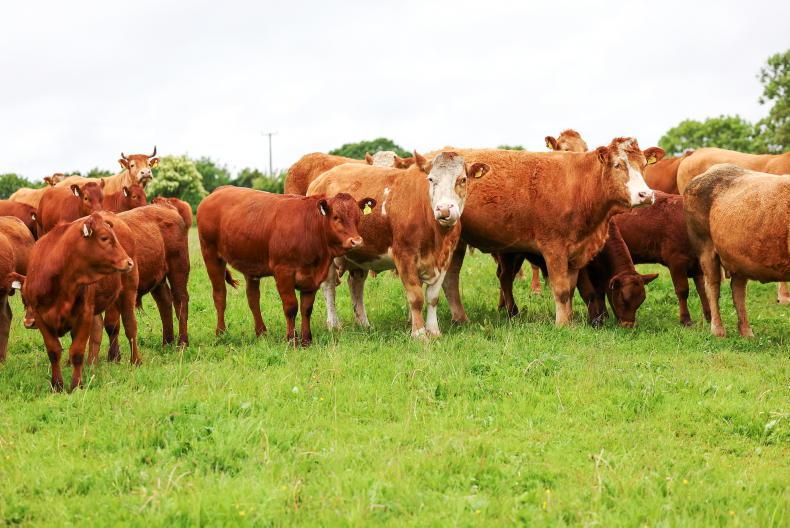Overall, it’s been a pretty dream year for grassland management on suckler and beef farms. Yes, there was times of extreme rain in the northwest and extreme dry in the opposite corner, but both were manageable.
Grass growth as a whole was up roughly 0.5 tonnes/ha by the end of June compared to last year, and a lot of fodder is now banked for winter 2025.
For the majority of beef farms, grass supply is still ahead of demand by a decent amount, and there may not be a need or an appetite to continue to take out surplus grass, with the majority of paddocks now having been corrected for quality.
A viable option would be to take out some poor performing paddocks for an autumn reseed instead.
If you were to look at the timeline, there is every chance that a grazing could be achieved in mid-late September with cattle, with an additional grazing in October with lighter stock.
Farmers will often highlight that taking out a paddock for reseeding in year 1 does little to affect the quantity of grass this paddock produces, as even with the paddock having to be sprayed off and taken out of the rotation, the new seed will outperform the older sward, especially in the back end of the year.
If you are planning on reseeding, get to it soon to allow for the all important post-emergence spray and grazing to take place in good weather conditions.
Jack Spillane – Tipperary Calf Farm, Co Tipperary
We got 22mm of rain earlier in the week with more forecast, so hopefully that will get us out of the hole we were in.
We held farm cover above 500kg DM/ha by going in with some bales in round feeders to some cattle to drop our demand; I’d hope that I can pull these in the next few days.
19-5-10 was spread across most of the platform 12 days ago, with the aim now being to build covers up and get back to normal. We have pulled 46 forward cattle which are now on 4kg of a 12% beef nut, with the aim being to draft these for slaughter in five weeks’ time.
All bar 50 of the strongest calves remain on 1.5kg/head/day of a 15% nut while at grass.
System Dairy calf to beef
Soil Type Variable
Farm cover (kg/DM/ha) 508
Growth (kg/DM/ha/day) 16
Demand (kg/DM/ha/day) 38
Peter Doyle – Derrypatrick Herd, Co Meath
We had decent amounts of rain before the dry period so we were never in a position of running tight on grass.
With some of our silage ground coming back in to the rotation, our demand has dropped down from 65kg DM/ha/day and we have 18 days of grass ahead of us, so some paddocks will likely be taken out. Second-cut red clover and grass only silage was harvested last week.
With good quality swards and ample grass, we are focusing on building up K indexes through spreading a 1/2 bag Potash/acre to replace off takes, with this being spread across the entire grazing platform. Bullocks are averaging 560kg and heifers are averaging 510kg, with a daily gain of 0.9kg/day since turnout.
System Suckler to beef
Soil Type Variable
Farm cover (kg/DM/ha) 789
Growth (kg/DM/ha/day) 43
Demand (kg/DM/ha/day) 45
Derek O’Donoghue – Salesian College, Co Limerick
We have three paddocks ready to take out once the weather settles, and this should bring out average farm cover to a more preferred level. We had run tight two weeks ago, but bar weaning lambs we did not have to do any other actions.
We will spread 20 units of protected urea across the grazing platform this week. We have pre-emergence spray going on some dairy reseeds soon, and while the sprayer is on, we will be spraying off some of the drystock ground (5-10%) for an autumn reseed.
Lambs were dosed with a white wormer after an FEC showed high worm levels. Testing after administration showed no difference in worm levels, so we are now going with an ivermectin
System Suckler to beef/ sheep
Soil Type Variable
Farm cover (kg/DM/ha) 1,050
Growth (kg/DM/ha/day) 28
Demand (kg/DM/ha/day) 23






 This is a subscriber-only article
This is a subscriber-only article










SHARING OPTIONS: